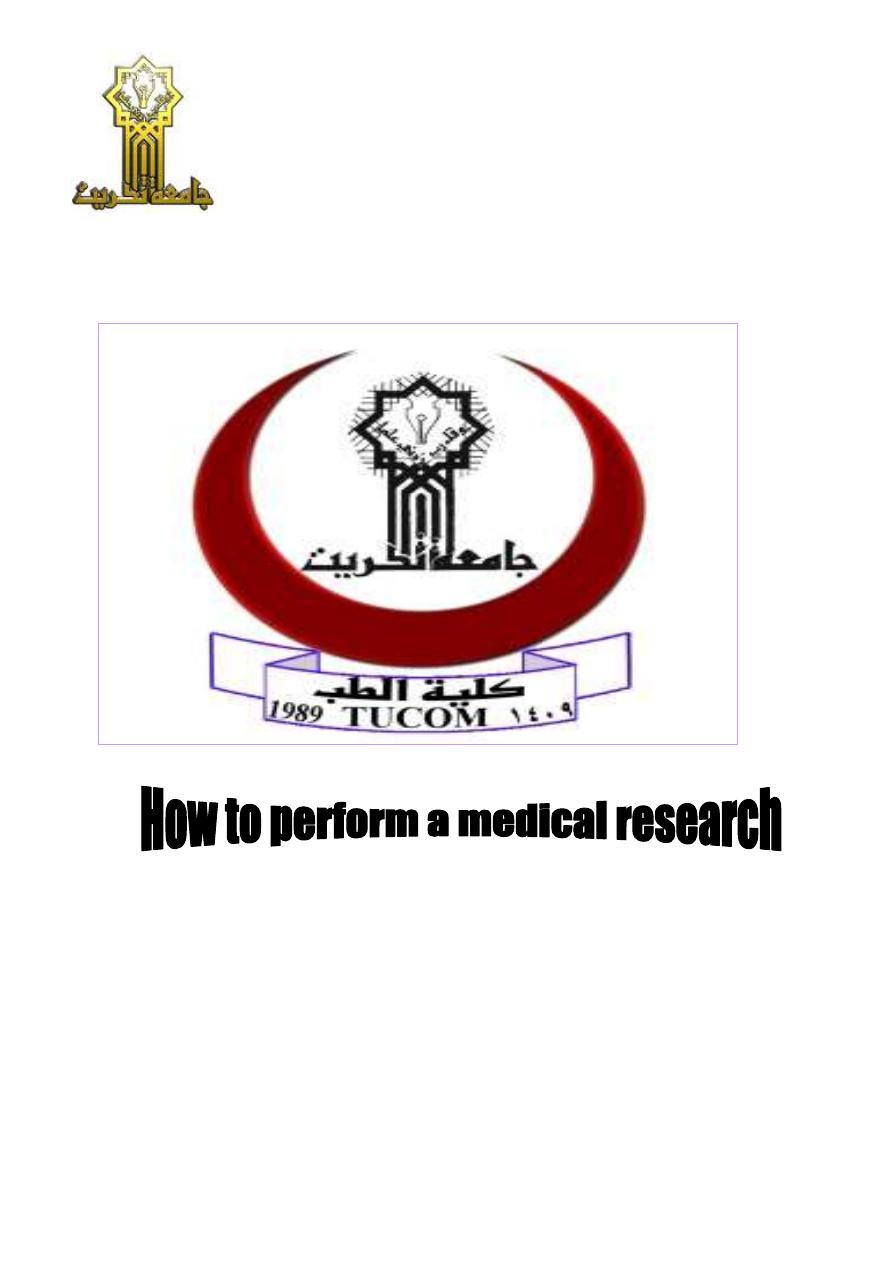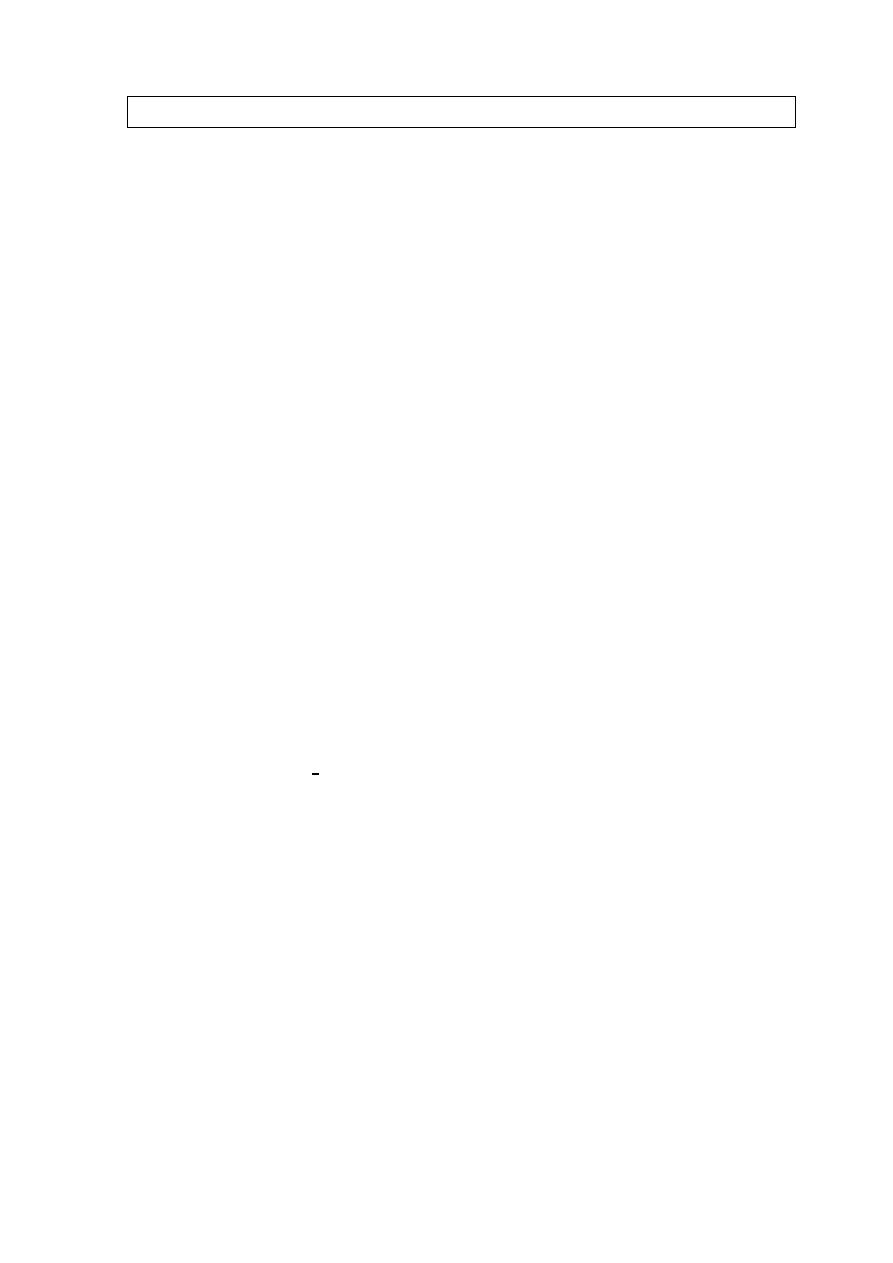
وزارة التعليم العالي والبحث العلمي
جامعة تكريت
كلية الطب
?
ا.م.د. نسرين محمد ابراهيم/فرع طب المجتمع:دادعا

Research
*Research: Systematic search for information and new knowledge, it
depends on systematic collection, analysis and interpretation of data to
answer a question or solve a problem.
Characteristics of research:
*
1. It demands a clear statement of the problem.
2. It requires a plan (it is not aimlessly looking for something in the hope
that can you find a solution)
3. It is based on existing data with consideration of positive and negative
finding.
4. New data should be collected as required and be organized in such way
that they answer the original research question.
*Types of research:
1. Theoretical research: It is based on theory and observation.
2. Empirical research: It is based on observation and experiments as in
biomedical and health system researches.
*Research implementation activities
1. Choosing a topic.
2. Literature search.
3. Formulate objectives.
4. Determination of sample.
5. Design a questionnaire.
6. Pretest.
7. Data collection.
8. Data analysis.
9. Computing.
10. Writing.
11. Typing.
12. Presentation.
13. Publication.
14. Application.

Components of thesis:
1.Title:
. A good title should adequately describe the contents of the paper in the
fewest possible words.
. It should not be too long or too short generally, it should consist of 10–
12 words.
. It should not include any unnecessary words, nor waste space with
phrases such as “Observations on” or “A study of”.
.It should not contain abbreviations
2. Summary or Abstract:
Many may read it only.
.Not more than 2 pages.
.Should contain: why, what, where, and how of your work.
.It must include some important findings.
.Conclusion must be clear in the last line
. It should be included at the beginning of the thesis.
.Abstracts are generally written in the past tense.
.It should not include references to literature or to figures and tables in
the body of thesis.
.It should not include information that is not in the paper.
.It should not contain abbreviations or acronyms unless standard or very
well known.
:
Acknowledgment
.
3
.Simple sentences.
.Includes supervisor, typist, and people who helped in work
4. Contents:
.Must be clear, use separate headings for the text, figures, & tables.
5. Abbreviations:
.Arranged in alphabetical order.
6. Introduction:
.Start with scientific bases of the work.
.State the major facts and means related to the subject.
.What other people discovered.
.Aim of your work clearly.

.It should not be over-referenced; it should give only strictly important
references
.It Should include definition, bases, history, & progress.
7. Material (subject or patients) and method:
.The methods section should provide a detailed exposition of the research
design.
.The methods section should be organized under meaningful subheadings
and describe techniques used in sufficient detail to allow others to
replicate the study.
.New or substantially modified methods should be clearly described, with
reasons given for using them and with their limitations outlined.
.Sample details should be explained in detail (size, gender, age, included
and excluded criteria of sample)
.Time and place of work should be clearly identified.
.Where , & when was the work conducted?
.What was the source o your sample?
.How was the procedure?
.What was done?
.No results, no conclusions, no references
8. Results
.Results that do not relate to the research objective should not be
mentioned.
.Sufficient detail should be given to allow other scientists to assess the
validity and accuracy of the results.
.Tables:
-A table should be readily understood without reference to the text.
-A table should be cited in the text,
be numbered, and have a title which exactly describes the content of the
table.
-It should have short or abbreviated headings for columns and rows and,
if necessary, a footnote for explanation of non-standard abbreviations that
are used, and for identification of statistical measures of variations.
-Columns should be arranged from left to right in a logical sequence.
-Rows should be arranged from top to bottom in a logical order.
.Illustrations
-Graphs are used to illustrate relationships.

-Titles and detailed explanations belong in the legends for illustrations
not on the illustrations themselves.
-Figures should be numbered consecutively according to the order in
which they have been first cited in the text.
-When symbols, arrows, numbers, or letters are used to identify parts of
the illustrations, each one should be explained clearly in the legend.
9. Discussion:
. Statement of principal findings, This should not normally be more than
a few sentences.
. Strengths and weaknesses of the study.
. Strengths and weaknesses in relation to other studies.
. Meaning of the study, possible mechanisms and implications for
clinicians and policymakers
. Unanswered questions and future research.
9.Conclusions:
. It should be linked with the goals of the study.
. It should be limited to the boundaries of the study.
. Avoid unqualified statements and conclusions not completely supported
by the data.
10. Recommendations:
. Suggestion for future work
11. References
. The number of references should be restricted to those that have a direct
bearing on the work described.
. In the Harvard system, the order of references at the end of the paper is
strictly alphabetical, regardless of the chronology.
. In Vancouver system references should be numbered consecutively in
the order in which they are first mentioned in the text. References in text,
tables and legends should be identified by Arabic numerals (1,2,3…) in
parentheses.
. In Tikrit medical college, references written by Vancouver style.
12. Appendix.
